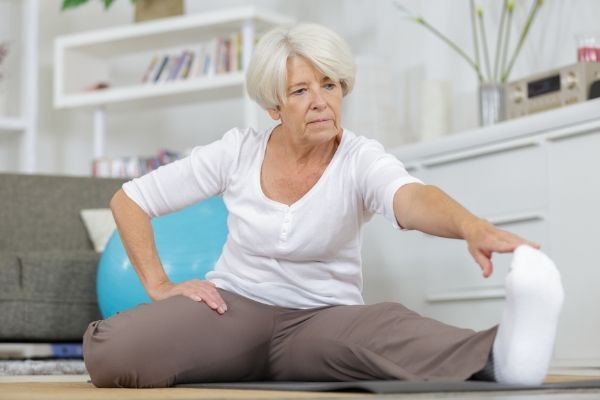As we age, the body experiences a natural reduction in muscle mass, strength and bone mineral density. This reduction is accelerated in women compared to men, with the onset of the acceleration often around the time of the menopause. During menopause there is a decline in the levels of the hormone oestrogen. This decline has numerous negative effects on women’s bodies:
- Loss of bone mineral density (increasing the risk of osteoporosis)
- Increased risk of cardiovascular disease
- Increased visceral fat.
One physiological effect of the decline in oestrogen is on muscle tissue – A number of studies have demonstrated associations between the hormonal changes occuring in menopause and the loss of muscle mass and strength (sarcopenia) in older women.
In addition to oestrogen, a number of other hormones and cellular messenger molecules are also affected (progesterone, thyroxine, interleukin-6, insulin-like growth factor). The physiological effects of these changes across the body are huge, as we will explore below.
What we’ll cover:
Effects of menopause on muscle
The effects of menopause on muscle tissue include (1):
- ↑ Muscle protein breakdown
- ↑ Fat within muscle tissue (which cannot be used for muscular contraction)
- ↓ Type II muscle fibers, and ↑ type I muscle fibers (these are weaker and slower)
- ↓ Contractile properties of muscles
- ↓ Calcium release within muscles (required for muscular contraction)
- ↓ Overall motor units within muscles (motor units are the contractile building blocks of muscle tissue)
- ↓ Ability to recruit all motor units within a muscle
Effects of menopause on bones
The effects of menopause on bone density include (2):
- ↑ Bone resorption (↑ osteoclast activity)
- ↓ New bone formation (↓osteoblast activity)
- ↓ Calcium absorption
- ↓ Response to vitamin D
The overall effects are a loss of bone mineral density, muscle mass, strength, power output- reducing functional abilities, increasing the risk of falls and injuries and reducing the quality of life of older women.
What Can I Do About These Changes?

Some of these changes are inevitable with the physiological hormonal changes. However, lifestyle factors have been shown to be some of the most significant factors contributing to the loss of bone and muscle mass, including a lack of physical activity, inadequate protein intake and inadequate calcium and vitamin D intake. These are therefore essential targets.
So what can you do to prevent, treat or reverse the effects of sarcopenia and osteoporosis?
Strength training
Resistance strength based exercise has been shown to be one of the best interventions to treat, slow down, reverse and prevent the effects of both sarcopenia and osteoporosis. To learn more about this, check out our introduction to strength training for older adults, or try out one of our fitness plans, suited to your level of ability.
Protein
Make sure that you are consuming enough protein.
Protein guidelines vary depending on activity levels. A general guide for a moderately active adult is 0.8g of protein per kg of body weight every day (3). However, ageing muscles do not respond as well to protein as younger muscles. They have a reduced ability to use the available protein, and therefore as you get older, there is actually a greater demand for protein.
In addition to this, other physiological age-related systemic changes including an increase in systemic low grade inflammation, hormonal changes and increased visceral fat all lead to an overall stimulation of muscle breakdown over muscle synthesis; increasing the demands for protein even higher. The European Society for Clinical Nutrition and Metabolism (ESPEN) recommend a higher intake of 1.0-1.2g/kg body weight per day for healthy older adults due to these increased demands. Some high protein foods you could add to your diet include: lean chicken, lean pork, fish, lean beef, tofu, beans, lentils, low-fat yogurt, milk, cheese, seeds, nuts, and eggs.
Calcium and Vitamin D
Make sure you are getting enough calcium and vitamin D
The recommended daily intake of calcium is 1200mg for females aged 50-70yrs (1000mg for males), and 1200mg for everyone over the age of 70 (4). For optimum absorption it is recommended this daily intake is spread throughout the day from a variety of food sources. Vitamin D is needed for calcium absorption. The recommended daily intake of vitamin D in 10ug. Vitamin D is best obtained from sunlight, although it is in a small number of food sources.
The NHS recommends everyone in the UK takes a vitamin D supplement throughout autumn and winter, and at risk individuals all year round (5).
For more information on the current recommendations of a number of key vitamins please see the NHS website: https://www.nhs.uk/conditions/vitamins-and-minerals/


